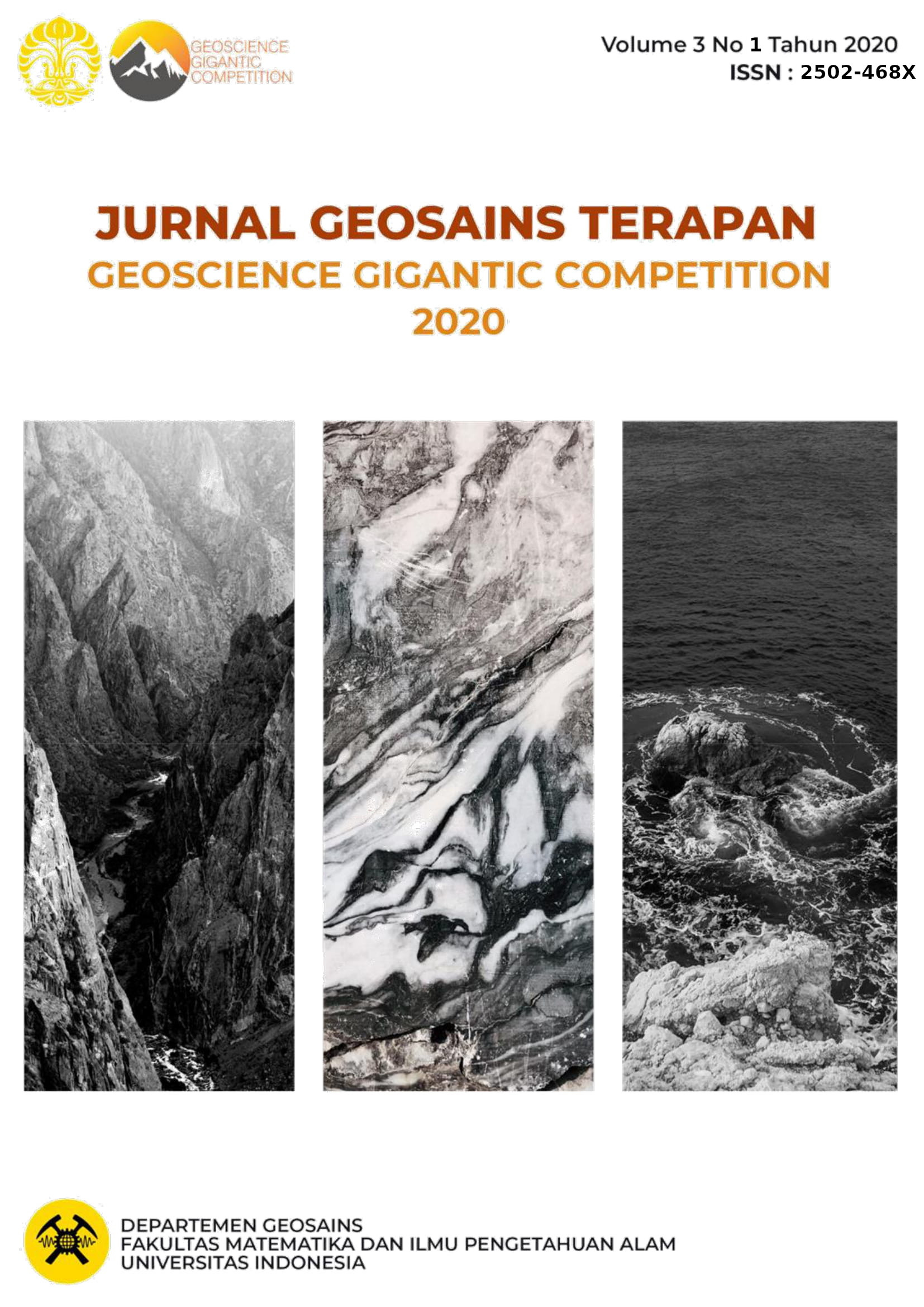The Application Of Outliers-Out Stacking For Seismic Noise Reduction In Synthetic And Real Data
Kata Kunci:
Outliers-Out Stack, OlO Stack, Seismic Noise, Seismic Data ProcessingAbstrak
Seismic data processing is an important stage to improve the signal-to-noise (S/N) ratio and the seismic resolution in the seismic method. The invention of new methods for seismic data processing needs to be examined for its effectiveness and its implications to the whole sequences in the seismic data processing. Outliers-Out Stack (OlO Stack) is a new alternative for stacking method. This method is claimed more effective in eliminating bad sample data, which is contaminated by the outliers. Further, this method is able to improving stacking methods to become optimum. In this study, we applied the OlO Stack method to the synthetic and real data set by comparing its result with 2 other stacking methods, i.e., Mean Stack and α-Trimmed Stack. The three methods are applied to 2D seismic marine data, which have been varied at some processing stages. The results show that the application of OlO Stack in seismic data processing is less effective to reduce seismic random noise compared to the two other methods. However, the application to the synthetic data set with the NMO case, the OlO stack shows better quality, which is indicated by a high correlation coefficient of 0.892196 and a lower RMS error of 0.109851. These results were confirmed by the real data set, where the OlO Stack data is able to reduce ringing and suppress multiple energy better than the other two methods.
Referensi
Yilmaz, Ozdogan, 1987, Seismic Data Processing, Tulsa: Society of Exploration Geophysics.
Ruckemann, C.-P., 2012, Comparison of stacking methods regarding processing and computing of geoscientific depth data: Geoprocessing 2012: The Fourth International Conference on Advanced Geographic Information Systems, Applications, and Services, 35–40.
Rashed, Mohamed, 2016, Outliers-out stack: a new algorithm for processing seismic data, Exploration Geophysics, 49(1), 42-49.
Mayne, W.H., 1962, Common-reflection point horizontal data stacking techniques: Geophysics, 27, 927-938.
Liu, G., Formel, S., Jin, L., and Chen, X., 2009, Stacking seismic data using local correlation: Geophysics, 74, V43-V48. doi: 10.1190/1.3085643
Lee, Myung W., Agena, Warren F., 1994, Applications of Velocity-Stack Methods to Seismic Data Processing, U.S. Geological Survey Bulletin 2102.
Rashed, M.A., 2008, Smart stacking: A new CMP stacking technique for seismic data: The Leading Edge, 27, 462-467.
Neelamani, R., Dickens, T.A., Deffenbaugh, M., 2006, Stack-and-denoise: A new method to stack seismic datasets: 76th Annual International Meeting, SEG, Expanded Abstracts, 2827- 2831.
Watt, T., Bednar, J., 1983, Role of alpha-trimmed mean in combining and analyzing seismic common depth point gathers: Technical Program Abstracts and Biographics, Society of Exploration Geophysicists, 276-277.
R.A. Young, and R.D. Lo Piccolo, A comprehensive AVO classification. The Leading Edge, (2003). 22(10), pp.1030-1037.
A.M. Dziewonski, and D.L. Anderson, Preliminary reference Earth model. Physics of the earth and planetary interiors, (1981). 25(4), pp.297-356.
Unduhan
Diterbitkan
Cara Mengutip
Terbitan
Bagian
Kategori
Lisensi
Hak Cipta (c) 2021 Jurnal Geosains Terapan

Artikel ini berlisensi Creative Commons Attribution-NonCommercial-NoDerivatives 4.0 International License.


